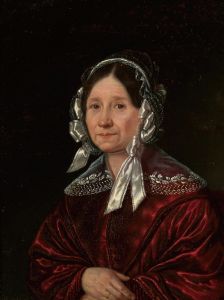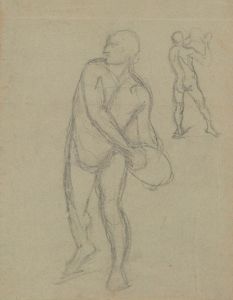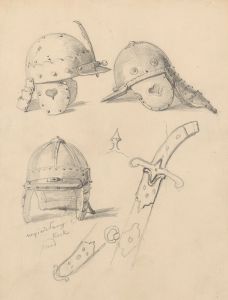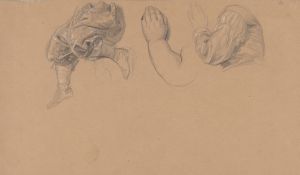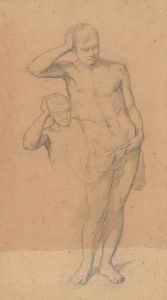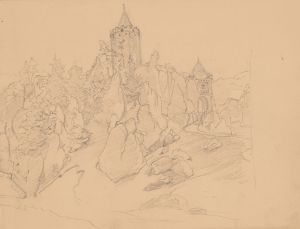
Szkic aktu do postaci księcia Jana Finlandzkiego do obrazu ‘Katarzyna Jagiellonka w więzieniu w Gripsholmie’
A hand-painted replica of Józef Simmler’s masterpiece Szkic aktu do postaci księcia Jana Finlandzkiego do obrazu ‘Katarzyna Jagiellonka w więzieniu w Gripsholmie’, meticulously crafted by professional artists to capture the true essence of the original. Each piece is created with museum-quality canvas and rare mineral pigments, carefully painted by experienced artists with delicate brushstrokes and rich, layered colors to perfectly recreate the texture of the original artwork. Unlike machine-printed reproductions, this hand-painted version brings the painting to life, infused with the artist’s emotions and skill in every stroke. Whether for personal collection or home decoration, it instantly elevates the artistic atmosphere of any space.
Józef Simmler was a prominent Polish painter of the 19th century, known for his historical and genre paintings. One of his notable works is the sketch titled "Szkic aktu do postaci księcia Jana Finlandzkiego do obrazu ‘Katarzyna Jagiellonka w więzieniu w Gripsholmie’" (Study for the Figure of Prince John of Finland for the Painting 'Catherine Jagiellon in Prison at Gripsholm'). This sketch was a preparatory work for a larger painting that depicted a significant historical event involving Catherine Jagiellon, a Polish princess, and her imprisonment.
Catherine Jagiellon was born in 1526 as a member of the Jagiellonian dynasty, a powerful royal family in Central Europe. She was the daughter of Sigismund I the Old, King of Poland and Grand Duke of Lithuania, and Bona Sforza, an Italian duchess. In 1562, Catherine married John, Duke of Finland, who later became John III of Sweden. This marriage was part of the complex political alliances of the time, aimed at strengthening ties between Poland and Sweden.
The historical context of the painting revolves around the political turmoil in Sweden during the 16th century. John, Duke of Finland, was involved in a rebellion against his half-brother, King Eric XIV of Sweden. As a result of this conflict, John and Catherine were imprisoned in Gripsholm Castle from 1563 to 1567. This period of captivity was marked by hardship and uncertainty for the couple.
Simmler's painting captures the emotional and historical significance of Catherine's imprisonment. The sketch of Prince John of Finland was an essential part of the composition, as it aimed to portray the dignity and resilience of the couple during their confinement. Simmler was known for his attention to detail and his ability to convey the emotional depth of his subjects, which is evident in this preparatory work.
The final painting, "Catherine Jagiellon in Prison at Gripsholm," is a testament to Simmler's skill in historical narrative art. It not only reflects the personal struggles of Catherine and John but also highlights the broader political tensions of the era. The painting is considered an important piece of Polish art history, as it illustrates the intersection of personal and political narratives in the lives of historical figures.
Józef Simmler's work, including this sketch, is celebrated for its historical accuracy and artistic merit. His ability to bring historical events to life through his paintings has left a lasting impact on Polish cultural heritage. The sketch of Prince John of Finland serves as a valuable insight into Simmler's creative process and his dedication to portraying historical events with authenticity and emotional depth.







